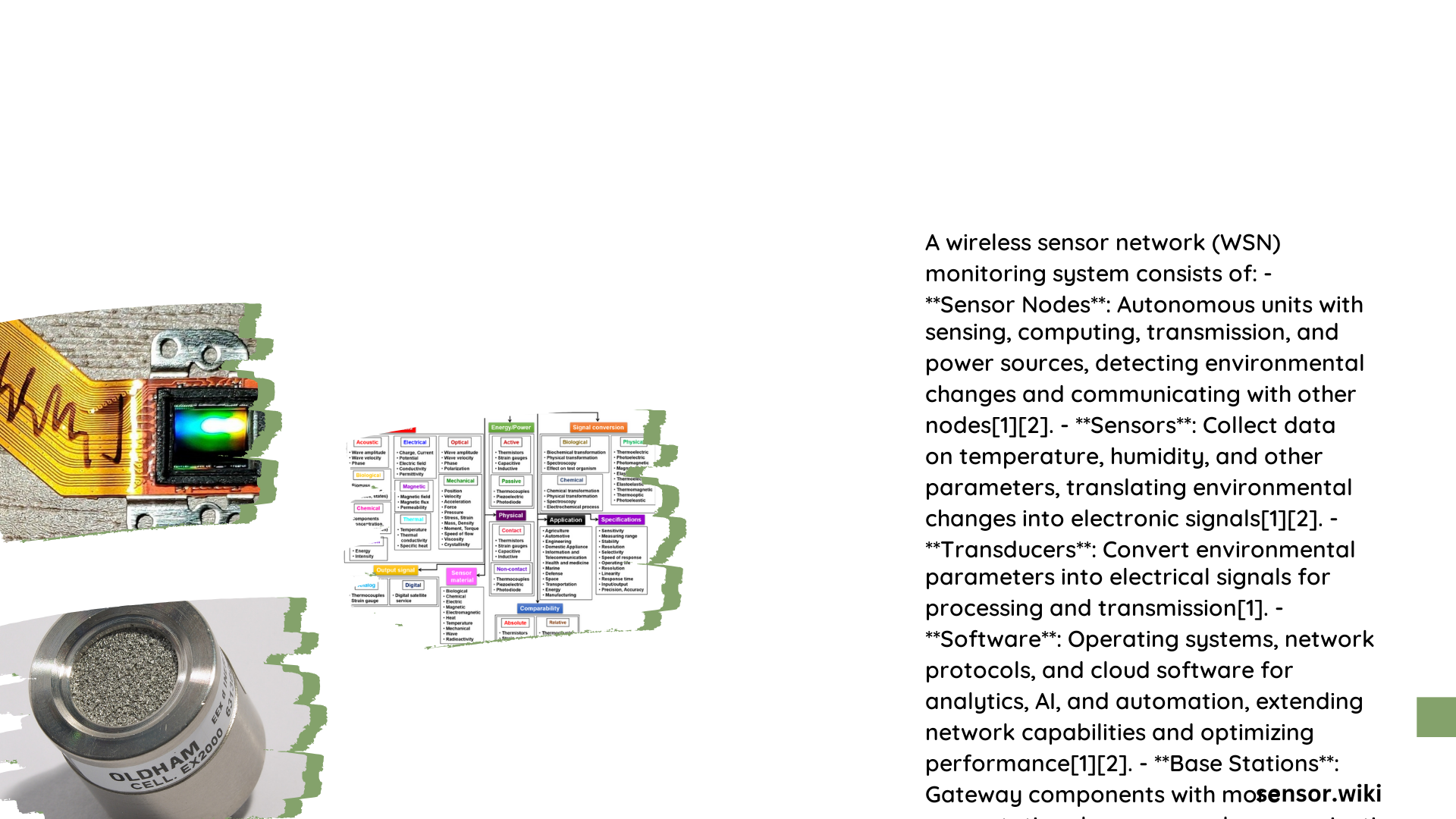Wireless Sensor Network Monitoring System: A Comprehensive Overview
A wireless sensor network monitoring system represents a sophisticated technological infrastructure designed to collect, transmit, and analyze environmental and physical data through interconnected sensor nodes. These advanced networks leverage cutting-edge communication protocols and intelligent sensor technologies to provide real-time insights across diverse domains such as industrial control, environmental monitoring, healthcare, and smart infrastructure management.
What Makes Wireless Sensor Network Monitoring Systems Unique?
Wireless sensor network monitoring systems distinguish themselves through several key characteristics:
- Distributed Intelligence
- Sensor nodes operate autonomously
- Decentralized data processing capabilities
-
Adaptive communication strategies
-
Scalable Architecture
- Supports dynamic node addition/removal
- Flexible deployment configurations
- Robust network topology management
How Do Sensor Nodes Communicate?
Sensor nodes utilize multiple communication mechanisms:
| Communication Method | Transmission Range | Power Consumption | Typical Applications |
|---|---|---|---|
| Radio Frequency | 10-100 meters | Moderate | Indoor monitoring |
| Bluetooth Low Energy | 10-30 meters | Low | Personal area networks |
| ZigBee | 10-100 meters | Very Low | Industrial control |
| Wi-Fi | 50-100 meters | High | Large-scale monitoring |
What Are the Core Components of a Wireless Sensor Network?
Sensor Node Architecture
- Microcontroller: Central processing unit
- Transceiver: Wireless communication module
- Power Source: Battery or energy harvesting system
- External Memory: Data storage and logging
- Sensors: Environmental parameter measurement
How Are Sensor Networks Deployed?
Deployment strategies vary based on specific requirements:
- Deterministic Deployment
- Precise node placement
- Controlled coverage area
-
Predictable network performance
-
Random Deployment
- Scattered sensor distribution
- Flexible coverage
- Suitable for challenging terrains
What Challenges Do Wireless Sensor Networks Face?
Key challenges include:
- Energy Efficiency
- Limited battery life
- Power consumption optimization
-
Energy-aware routing protocols
-
Security Concerns
- Data encryption
- Authentication mechanisms
-
Intrusion detection systems
-
Signal Interference
- Mitigating wireless signal disruptions
- Implementing robust communication protocols
What Are Recommended Best Practices?
Implementing a successful wireless sensor network monitoring system requires:
- Comprehensive Planning
- Rigorous Testing
- Continuous Performance Monitoring
- Regular Firmware Updates
- Adaptive Configuration Management
Emerging Trends in Wireless Sensor Network Monitoring
- Integration with artificial intelligence
- Edge computing capabilities
- Enhanced machine learning algorithms
- Improved energy harvesting technologies
Conclusion

Wireless sensor network monitoring systems represent a transformative technology enabling unprecedented environmental and operational insights across multiple domains.
